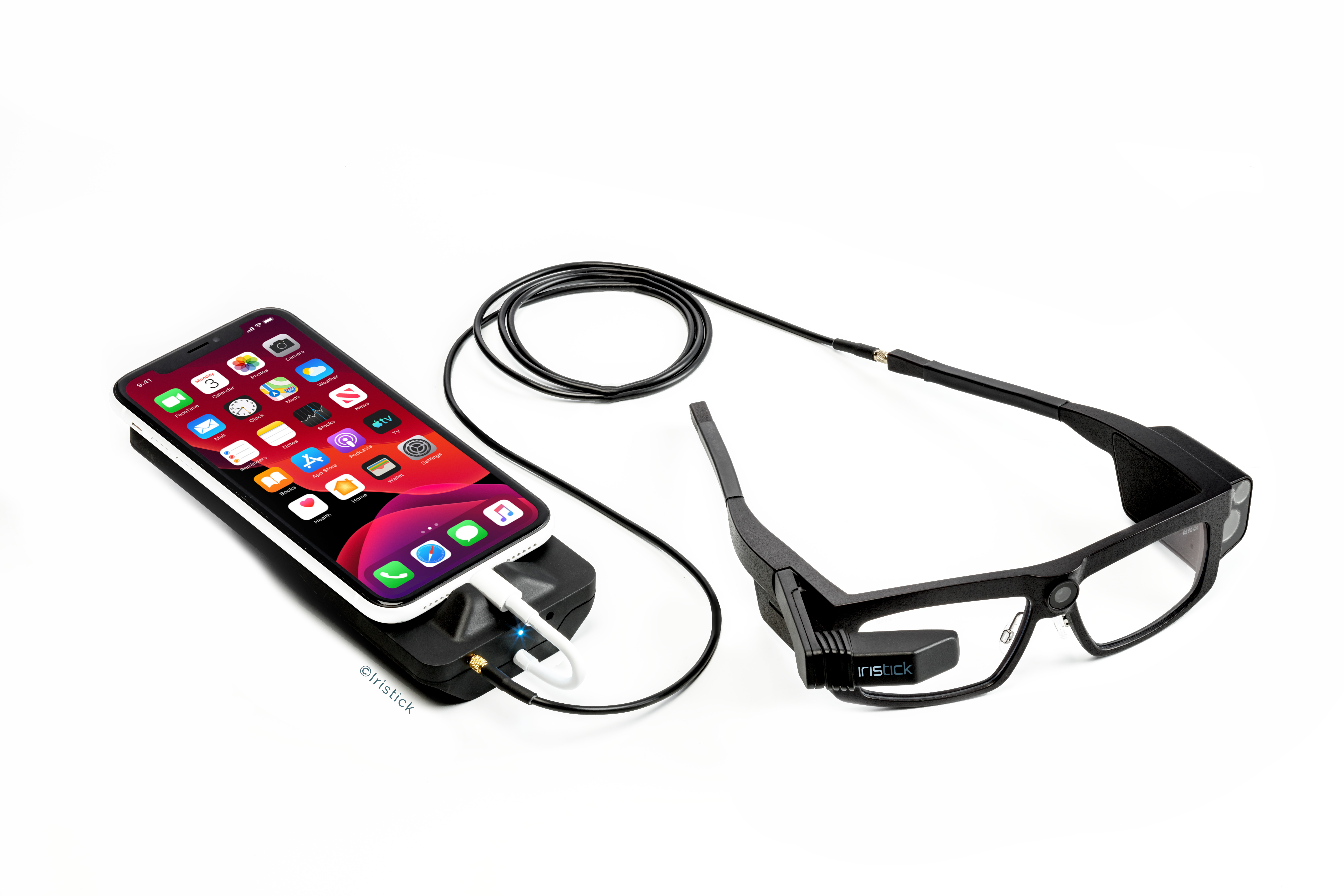In the beginning of the month, Qualcomm’s Hugo Swart gave a comprehensive overview of the evolution of smart glasses in his keynote speech at the AWE USA event. He explained that as these devices evolve, they are going to start connecting to phones to leverage their processing power. But what does this mean exactly and why is it an advantage for smart glasses to connect to a phone? In this article, we will take a deep dive into these so-called phone-tethered devices and the benefits they offer.
Since the beginning of the COVID-19 pandemic, smart glasses have gained significant ground in an abundance of industries. All over the world, they have been used by maintenance personnel to help with issues remotely during lockdowns, as well as healthcare workers to check in with their patients from a distance to avoid infections. Now the restrictions have been lifted in most countries, but the undeniable advantages of smart glasses are still benefiting companies globally. One thing is for sure, smart glasses are here to stay. In fact, the market of these devices is expected to reach USD 15,1 billion by 2030, with a compound annual growth of 12.6% from 2021 to 2030[1].
When talking about smart glasses, we usually recognize two different categories. One is the so-called first-generation smart glasses, all-in-one devices that are basically wearable computers with batteries and processors inside them. Smart glasses of the other category, however, use a different approach. Often called phone-tethered smart glasses, these devices connect to a smartphone to make use of its processing power, 4G and 5G connectivity, security, and other functionalities. By leveraging the capabilities of a smartphone, these glasses offer a wide range of benefits that would be harder or impossible to achieve with all-in-one devices. Here’s a list with eight of the most prominent advantages.
1. Easy to set up and enroll into existing systems
With a pair of phone-tethered smart glasses, there are no complicated installation procedures or an additional need to set up software. All you have to do is connect the smart glasses to your phone, and they are good to go.
2. Higher processing capacity
Phone-tethered smart glasses can leverage the powerful hardware of today’s smartphones. This way the glasses can run voice commands, text recognition or even complicated artificial intelligence (AI) solutions offline - even without having access to internet connection.
3. Seamless connectivity
Field service technicians often have to work in locations with no WiFi or Internet access. Phone-tethered smart glasses are a perfect choice for them since they can use the 4G or even 5G connection of the smartphone they are attached to. Smart glasses like the Iristick.G2 Pro and Iristick.H1 are also able to process voice commands offline, enabling hands-free work even in remote areas.
4. Full shift battery life
Phone-tethered smart glasses harness the power of an external battery pack (so-called ‘pocket unit’). This way, these devices can continuously livestream for 6 hours - basically a full shift, before running out of juice.
5. Optimized security & easy deployment (MDM)
Getting an all-in-one device deployed into the company’s Mobile Device Management (MDM) can be a bit complicated. By being able to connect to an employee’s phone that’s already integrated in the system, phone-tethered smart glasses can help you avoid this hassle, while providing a fully secure option.
6. Compatibility with a wide selection of smartphones and operating systems
Phone-tethered smart glasses can be connected to a wide range of smartphones no matter their brand or price. Devices like the Iristick smart glasses are compatible with both iOS and Android operating systems.

7. A future-proof investment
For many work environments, it is crucial to have the latest software update running on your devices, mainly for security reasons. With phone-tethered smart glasses, you only have to carry out the update on your phone, the glasses will work perfectly with the new software version as well. Wearables like the Iristick smart glasses are and will be compatible with future generations of smartphones or older devices alike. And when the company replaces their company phones, the Iristick smart glasses will still be compatible due to use of standard USB protocols.
8. Lower weight for more comfort
With an external battery, phone-tethered smart glasses can have a much lighter weight than all-in-one devices. This way, they can be a more comfortable option for frontline workers like field service technicians or surgeons who have to do hour-long shifts without a break.
Regardless of their design, we are certain that smart glasses are an undeniable part of our future, making our lives better, our work easier. If you would like to learn more about how smart glasses are being used in various industries, make sure to check out our use cases.
[1]Smart Glass Market by Technology (Thermochromic, Photochromic, Electrochromic, Suspended Particle Device (SPD), Polymer Disperse Liquid Crystal (PDLC), and Others), and End user Industry (Transportation, Construction, Power Generation, and Others): Global Opportunity Analysis and Industry Forecast, 2021–2030. https://www.alliedmarketresearch.com/smart-glass-market